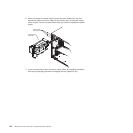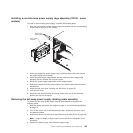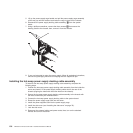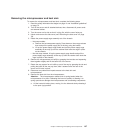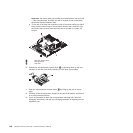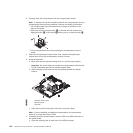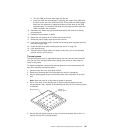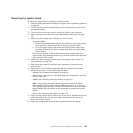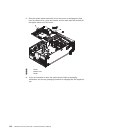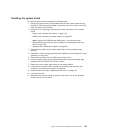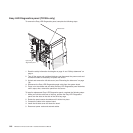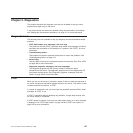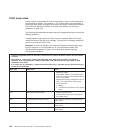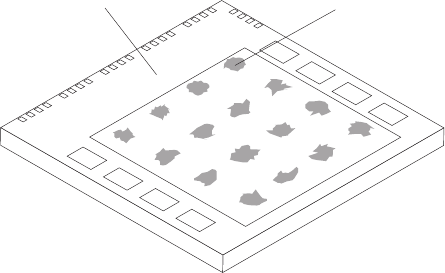
b. Turn the VRM so that the keys align with the slot.
c. Insert the VRM into the connector by aligning the edges of the VRM with
the slots at the end of the VRM connector. Firmly press the VRM straight
down into the connector by applying pressure on both ends of the VRM
simultaneously. The retaining clips snap into the locked position when the
VRM is seated in the connector.
8. Reconnect any cables that you disconnected during the removal of the old
microprocessor.
9. Reinstall microprocessor air baffle.
10. Rotate the rear system fan air baffle back into the server.
11. Rotate the power supply cage back into the server.
12. If you have a hot-swap model, reinstall the hot-swap power supplies back into
the power supply cage.
13. Install the side cover (see “Installing the side cover” on page 79).
14. Lock the side cover.
15. Reconnect the external cables and power cords; then, turn on the attached
devices and turn on the server.
Thermal grease
The thermal grease must be replaced whenever the heat sink has been removed
from the top of the microprocessor and is going to be reused or when debris is
found in the grease.
To replace damaged or contaminated thermal grease on the microprocessor and
heat sink, complete the following steps:
1. Place the heat sink on a clean work surface.
2. Remove the cleaning pad from its package and unfold it completely.
3. Use the cleaning pad to wipe the thermal grease from the bottom of the heat
sink.
Note: Make sure that all of the thermal grease is removed.
4. Use a clean area of the cleaning pad to wipe the thermal grease from the
microprocessor; then, dispose of the cleaning pad after all of the thermal grease
is removed.
Microprocessor
0.01 mL of
thermal grease
5. Use the thermal-grease syringe to place 16 uniformly spaced dots of 0.01 mL
each on the top of the microprocessor.
Chapter 4. Removing and replacing server components 141




